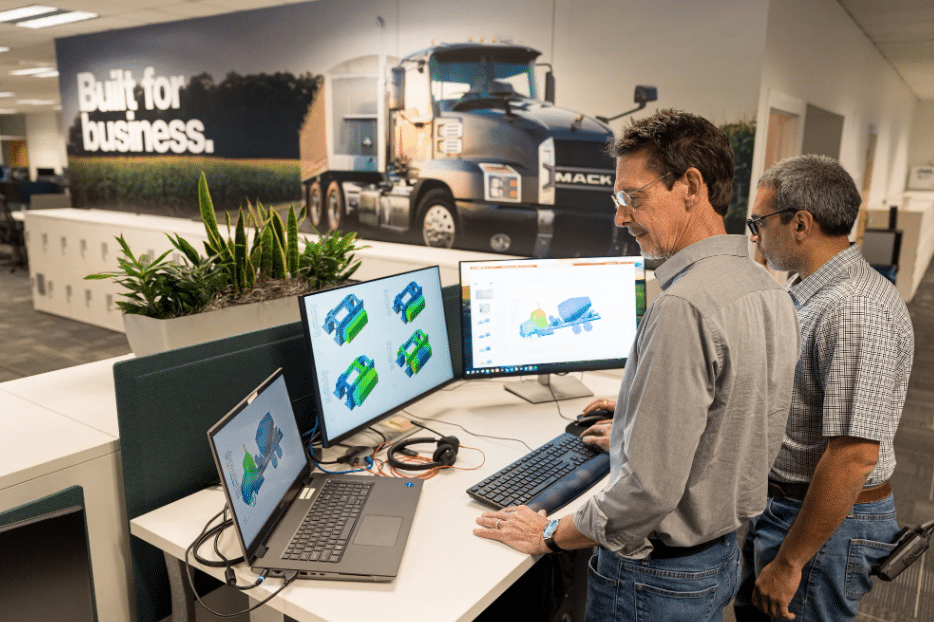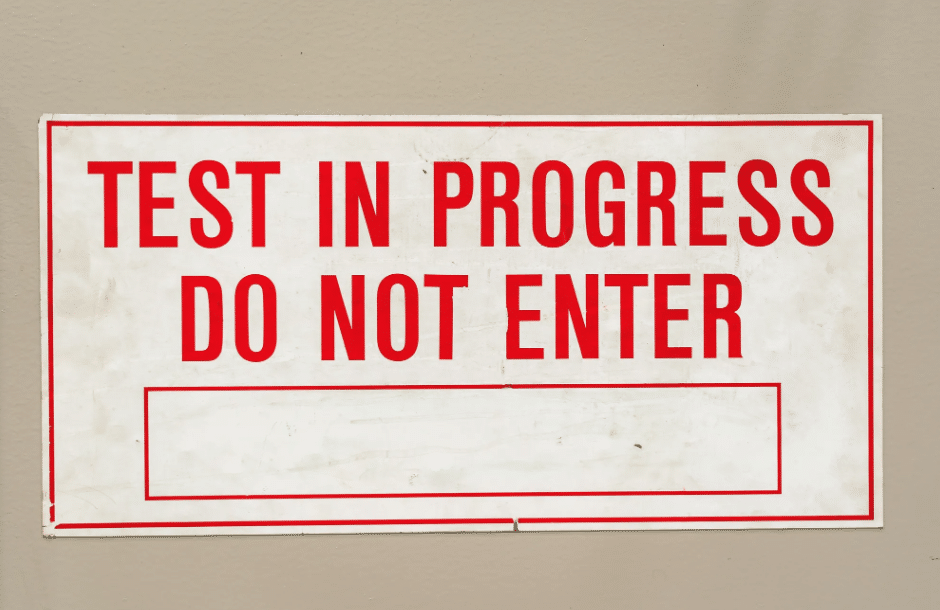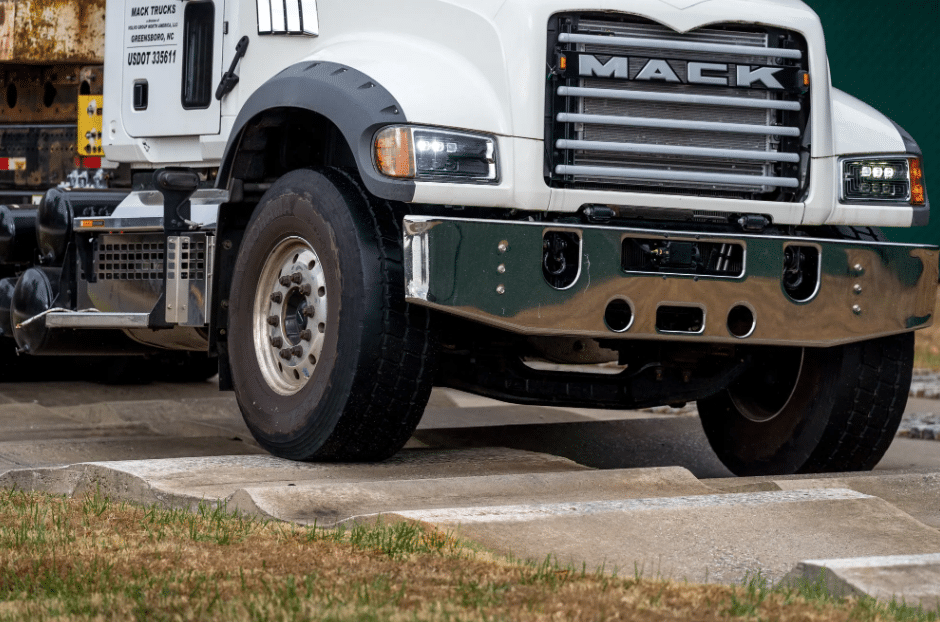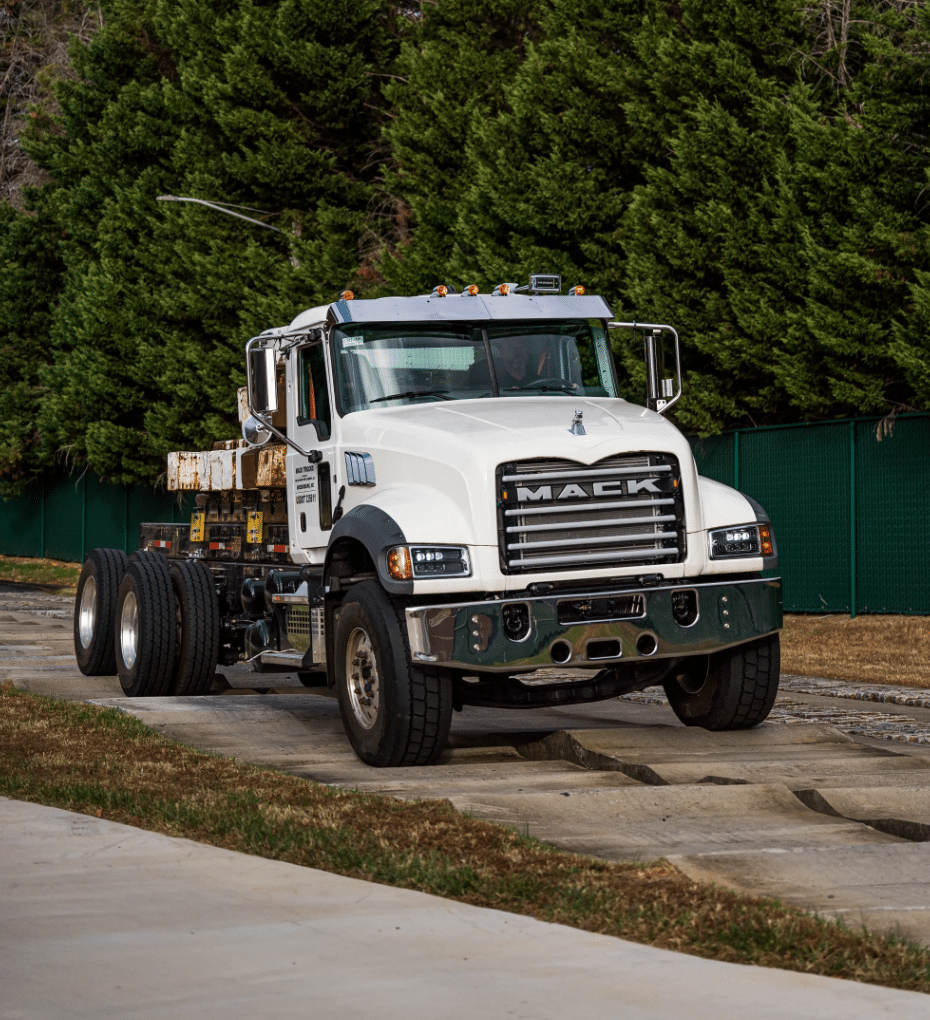Intense testing means quality, excellence and tough trucks
**Repost From BullDog Mag** Article by Amy Materson: Photos by Justin Kase Conder
Anthem, Granite, Pinnacle, TerraPro, LR, MD
If you ask Govi Kannan about Mack Trucks’ testing program, he might ask you what you think the testing process would be like. Kannan, Senior Vice President for Global Products for Mack, breaks testing down into four critical aspects – product experience, reliability, durability and features.
Kannan says testing drives the four parts of the product experience: visual, tactile, sound and ergonomic. “When you see a Mack truck in front of you, what comes to mind?” Kannan asks. “Big. Strong. Confident. It creates a visual impact. Next you want to touch it. You want to open the door and get in – to feel Mack.”
Reliability plays the next part in the testing process. Mack wants to make certain the customer experience results in maximized uptime. Total cost of ownership is key, says Kannan. This means using virtual testing to build confidence the truck will meet the customers’ needs through simulation, as well as field testing, which uses customer environments and daily operation to continue to build upon confidence in reliability.
Mack trucks are known for their durability and rigorous testing ensures the product outlasts the customers’ expectations, which Kannan says is the third aspect of testing. Life cycle focused, durability testing includes product safety, shaker and cycle testing for components, as well as Accelerated Endurance Testing, which is testing the complete truck through many cycles on a track designed to inflict incredible physical stresses on the truck.
Finally, testing influences features the end user experiences regularly. “Here, we want to make sure that customer experience related to Mack’s list of features meets or exceeds the customers’ expectations,” Kannan says. The features impact customer experiences such as ingress and egress, comfort, drivability, maintainability, suitability for body work and fuel economy. The features can be tested in internal or external clinics feature by feature or at the truck level, and simulation testing provides a simulated customer environment.

Testing plays a large role in delivering a distinct experience to each customer. Knowing what kind of experience Mack Trucks has determined to provide to the end user determines what they test on each product and how they go about it.
The journey begins in Greensboro, North Carolina, where the Complete Vehicle team provides engineering, research, testing, support, results and analysis using next-generation technology and knowledge. The engineers on the team develop and perform tests on every product in the Mack family.
“Here, we build confidence,” Govi Kannan says. “We build the confidence that it works, and it works for the customer.”
Ensuring endurance
If there’s anyone on the Mack Trucks team who enjoys their job, it’s the 14 engineers who work in Durability and Reliability (D&R) Testing in the Complete Vehicle Team. There are many critical features tested, such as corrosion resistance. But there are also durability and reliability tests that speak to the heart and soul of the Mack brand.
Under group manager Landon Craven, the testing is designed to always produce usable data using the best available testing technology. But they also get to do what Craven calls the “fun part of the job” – carefully applying immense stresses repeatedly for extended periods to see what a Mack truck can really handle. Frequently, it’s more than a typical truck would see in its lifetime. What type of tests does the team perform? In the D&R group alone, test types include accelerated endurance tests; data acquisition; hydraulic rig and bench; 7-acutator shaker rig; torque tension; temperature; cyclical components such as door slams, luggage lids, fairing and cabinet cycling; electrodynamic shaker; passive safety such as barrier crash, seat pulls, side impact and roof crush; corrosion and sun simulation; full vehicle durability simulation and correlation; and finite element analysis.

Craven says there are several approaches his team can take at the start of the testing process. For example, if it’s a federally regulated test, they’ll follow well-defined mandated guidelines. If the test is one they perform frequently, the testing engineer will follow established protocol for that test. If it’s something unusual or new then test development comes into play, such as for a modified component, or a new test request. They’ll work closely with the product engineers and sometimes customers to determine what exactly needs to be tested and what the circumstances of the test need to be to gain meaningful results. “If we’re making a change to a component or product – to make something better or more efficient – it’s developing a new test,” Craven says. “We’ll ask what we’re going to measure, how we’re going to measure it,what are the requirements and perform the prep work to set up the test.”
To set up a test, the test engineer may need to instrument a truck to collect data points for analysis. Craven says they use many types of measuring devices. Accelerometers are used to measure acceleration in one axis, or all the primary axis on the vehicle, to define the vibration profiles of components, calculate relative damage, develop test rig signals and perform simulation model correlation. The team uses strain gauges to measure the strain across the surface of a particular material, usually metal. Strain represents the “stretch” of any given material when a load is applied, and the data is used to quantify the strength of the material and the material yield, correlate to models and then gauge if a component can withstand required loads.
The team also uses a specially designed transducer, which measures the load through a particular component. These are made by typically applying multiple strain gauges or integrating load transducer to an existing component. These sensors are calibrated by applying a known force and measuring the output strain/transducer load, then used to develop a strain-to-load curve. They can also install the transducers on the truck and run it on the test track. This allows the team to know the load being experienced by a particular component and use that as an input in the component design or as a signal input for a rig test. These are made with truck components, so a Mack transducer is made using Mack-specific parts. Most of these are built in house by the Testing Technology group.
“When it comes to rig testing and bench testing, we have more specialized equipment,” Craven explains. Many of their tests are conducted using hydraulic actuators configured to reproduce the inputs measured on their test track. For a rig test, for example, the team will measure fatigue or overall strength of a particular part or component. The actuators are electronically controlled hydraulic or pistons that thrust precisely delivered impacts into the components. The impacts simulate the stress of real-world operations, amped up to extreme levels and repeated on a much more rapid cycle than found in the real world. These actuators can deliver anywhere from 2,000 to 50,000 pounds of impact hundreds of times a minute according to a carefully described test regime. Some of the components tested this way include axles, suspensions, chassis components and even interior components such as doors and trim panels.
The team also has three shaker rigs in Greensboro, as well as an electrodynamic shaker for high vibration testing. The shaker rigs have powerful hydraulic actuators and the engineers typically bolt a chassis or even chassis and cab to the rig, which tortures the components through six axis, frequently for weeks at a time. A climate chamber handles humidity and temperature cycle testing.
For ergonomic manual or ergonomic cyclical testing, the team has a robotic arm with five degrees of freedom – motion capabilities in multiple directions – to execute these repetitive tests. This includes tests such as opening exterior doors, door slams, pressing buttons and operating interior components.
No matter the product or the equipment they’re using, the team tests to the requirement,
and after that they test to failure – that is, until the component fails. Craven says it’s often surprising just how much it takes to break a Mack truck.

Creature comforts
While Craven and his team are trying to “break the truck,” his colleague Michael Kerley is working to ensure satisfactory results in productivity and efficiency measures.
Kerley, the group manager for Driver and Vehicle Productivity Testing, leads a team of engineers who cover an array of test types. Core test types for this group are noise, vibration and harshness (NVH); braking performance; vehicle dynamics; advanced driver assistance systems; ride comfort; cooling performance; heat management; fuel economy and aerodynamics; and climate performance.
Kerley’s group strives not only to ensure they’re meeting the demands of what they set out to do in each project, but also represent the Mack customer in terms of the data and the analysis.
“We try to be the voice of the customer within our department,” he says. “We want to see the truck through their eyes as we’re testing it. That’s part of how we plan and organize our tests, how we develop our test codes to ensure we are meeting that customer need, representing that application and then really collecting the data to prove the trucks are going to be a useful tool for them in each of their applications.”
To achieve this, the Driver and Vehicle Productivity Testing team looks at all the different areas the customer will experience on the truck – what they see, the way the truck handles, the comfort inside the truck, the noise the customer hears, the vibration they feel and more. Much of the work the team does is made up of in-vehicle type tests – on road or at a proving grounds or on the test track in Greensboro. However, they do use simulation to evaluate fuel efficiency and during early development testing.
The team will test the same product at different stages – a process Kerley refers to as “multi-milestone.” Their early development testing and early-stage prototype testing allows feedback into the development loop for engineering. Most of the team’s heavy lifting, so to speak, starts in the middle and picks up towards the tail end of development. The team uses the Greensboro track, as well as several other facilities around the country. Depending upon their needs, they have runways (for things like coast down tests), oval tracks and dynamic proving grounds available. The test tracks offer opportunities for vocational and highway events.
“Here, we build confidence,” he says. “We build the confidence that it works, and it works for the customer.”

To capture the data, Kerley’s engineering team may place as many as 200 sensors on the test vehicle and have a logging device that allows them to capture the data once they send the truck out on the track. Flowmeters and pressure sensors enable them to capture data for their team to analyze and review. The testing team has an entire group dedicated to their equipment.
Kerley says this team manages their existing equipment, incorporates new technology into the tests and supports data collection. “Trucks are smart, and instrumentation is sophisticated,” Kerley says. “This endless amount of data that we collect helps us really understand the nuances of our product and really dive deeper into the internal operations and the interconnections between different systems. In previous generations we weren’t able to get down to the same level of detail. Feeding that information and having that understanding drives innovation in our products.”
Kerley notes that the testing process itself allows for innovation thanks to rapid changes in technology, particularly with respect to powertrain performance and components with software-driven aspects such as active safety systems.
The team has backgrounds in different test areas and are divided by area of expertise, such as fuel efficiency, aerodynamics, vehicle dynamics; and the test engineers plan, develop and execute the test and deliver the results. They work together with trained technicians and mechanics to instrument the trucks, place the sensors correctly and collect the right data.
“We’re always trying to find ways to advance our technology,” Kerley says. “We’re finding ways to automate some of the work we do to make it repeatable and efficient. We’re looking at ways to automate some analysis work to make that a faster process.”

Next steps
The tests are conducted and data is collected. What happens then?
There’s a process in place, Craven explains, regardless if the results were considered positive or negative. The team analyzes the data, writes a report and includes their conclusions and documents the test procedure. If the test has a positive result, the team sends the project on to the next phase, whether it’s an app release or a production start, depending upon where they are in a particular project.
In the event they achieve an unexpected result, the loop opens for feedback and for work to begin.
“We’ll work closely with our vehicle engineering counterparts, collect extra data and perhaps work with a customer to collect input or do an ergonomic study,” Craven says. “Typically, there will be a virtual simulation. Then we’ll have a retest of the component to make sure it passes the requirements.” Craven says he compares his team’s standards to customers’ concerns in the field and works to ensure there are no gaps. The focus is repeatable processes and preemptively finding and addressing issues.
For Craven, that’s a key component of success. “Success is to do quality testing and provide quality results. We want to ensure the products we’re putting in the customers’ hands are going to meet their requirements. That’s our end goal.”
Kerley echoes a similar sentiment, saying his definition of success is a product that not only meets requirements but is also reliable for the end user.
“We want to make sure our data we’re collecting is realistic to what the customer is going to see,” Kerley says. “We also make sure that we’re covering the extremes for the application.”
Above and beyond
Although the Complete Vehicle team has a laser focus on testing, they’re quick to point out it’s a collective effort to execute any given test, noting it requires the participation of up to seven additional groups to bring a test to fruition. Whether it’s technicians, product build support, purchasing, additional engineers or prototype parts, many people touch each test. It’s a critical part of being involved in a large organization that runs efficiently.
The Mack brand is synonymous with longevity and durability. Kannan says that it’s part of Mack’s commitment, and part of what it stands for. He says with respect to Mack reliability, it’s not about the first or the 100th or even the 100,000th mile. It’s about the 500,000th mile and beyond. It’s about testing for the kind of reliability that will work and will work all the time. It’s about continuing to build a steel cab when others settle for aluminum. It’s about using offset steps instead of ladder-type steps for driver safety. With respect to safety, there are regulatory requirements to which all manufacturers must adhere; however, Mack’s values go beyond the bare minimum and internal standards are more stringent than the actual requirement, says Craven. In addition to Mack’s shaker and accelerated endurance testing, the passive safety work includes side impact testing similar to European BOF10 and ECE R29 regulations.
Mack also uses a technology called digital image correlation, which means test engineers can paint a surface – such as the glass on a cab – and then measure the strains in the glass surface.
Extreme product testing is “in our DNA,” Kannan says. “Maybe it’s exhibited, maybe it’s presented, monitored and managed over the generations in a different way. So, the way we do things might change, but what we stand for will continue to be what it is.”
And that is a tough, reliable and safe truck that passes the test.

